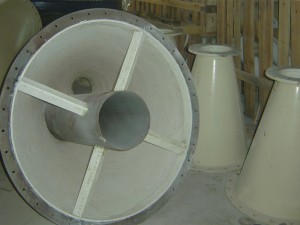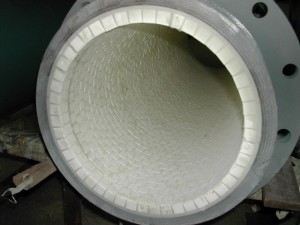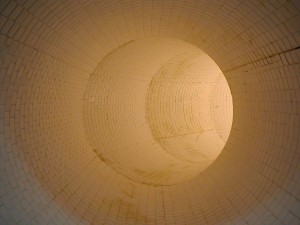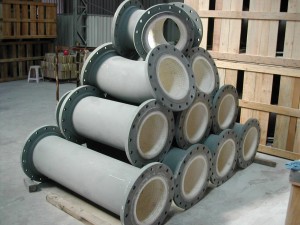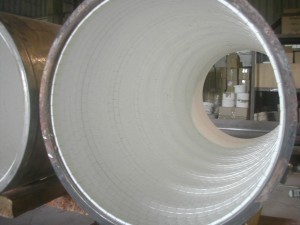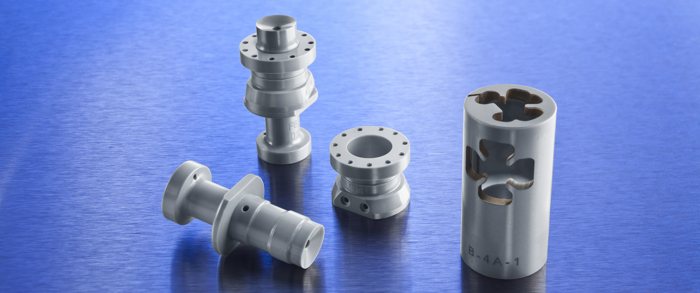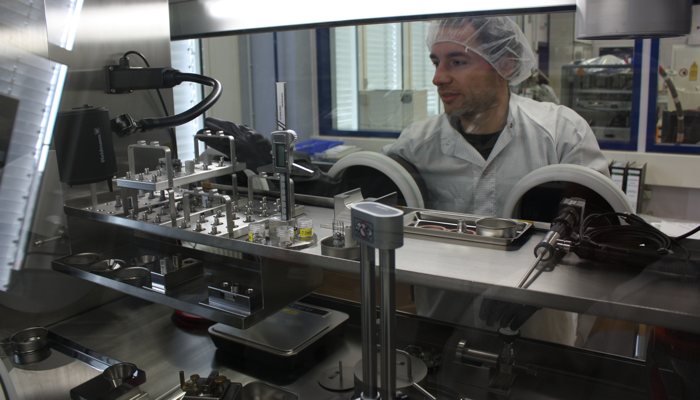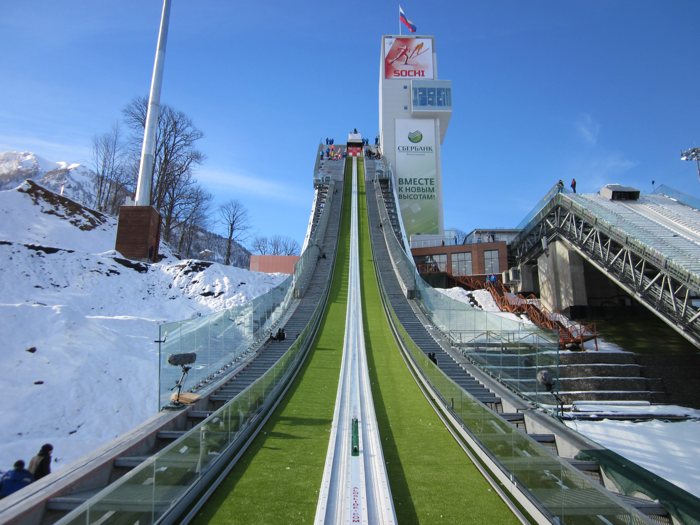Anisotropic, transparent fluoroapatite ceramics for high-power laser applications
Edited By Eileen De Guire • October 22, 2012

An Alfred University team led by Yiquan Wu is developing methods for synthesizing anisotropic, transparent, polycrystalline ceramics for high-power applications like laser-based fast-ignition of fusion. Credit: Wu; Alfred Univ.
You need a spark to light a fire, and sometimes that’s not so easy, as anybody who’s tried to light a too-green yule log can attest. Thermonuclear reactions, too, have to be ignited, and that is definitely not easy.
The Lawrence Livermore National Laboratory has been studying the problem and is making significant progress on their laser-based “fast ignition” approach for igniting a thermonuclear reaction in a compressed hydrogen isotope fuel pellet. The conventional approach, called the “central hot spot,” involves simultaneously compressing and igniting a spherical fuel capsule in an implosion. In contrast, the FI approach separates the compression and ignition stages of the implosion, which provides advantages such as allowing for variability in fuel capsule dimensions and requiring less mass for ignition (thus less energy input and more energy gain). If the advantages of FI can be realized, the eventual development of an inertial fusion-energy power plant should be easier. Also, the ability to study these types of reactions in a controlled setting could eliminate the need for underground testing of nuclear weapons and allow scientists to study the physics and chemistry unique to the cores of stars and planets.
FI is, itself, a sophisticated technology that involves synchronizing the outputs of 192 laser beams to deliver a massive amount of energy to the fuel pellet. In May, Nature Photonics reported that LLNL successfully demonstrated the technology in March, firing the 192 beams simultaneously and delivering 1.875 megajoules of energy in 23 billionths of a second. LLNL followed-up with a successful repeat firing in July, bringing the possibility of laser-based fusion “75% of the way” to reality, according to a story on optics.org.
There are some practical problems, however. According to the LLNL website, the 192-laser array can fire off a beam only every few hours; between firings, time is needed for the thousands of optics to cool enough to endure another round. Thus, along with this technology, LLNL is working on developing a single-beam laser system in a program called “Mercury.” Mercury’s scientists have already come up with a method for cooling the optics that will allow for frequent firing of the laser. The Mercury technology uses light from diode lasers (similar to those used in commercial CD read/write players) that is amplified as it passes through a ytterbium-strontium-fluoroapatite (Yb:S-FAP) single crystal gain medium. While Yb:S-FAP is one of the most promising materials for high-efficiency, high-power laser applications, it is difficult to grow as a large single crystal, according to Alfred University assistant professor Yiquan Wu.
Wu, supported by an Air Force Office of Scientific Research Young Investigator Award, is studying the synthesis and properties of anisotropic, polycrystalline, transparent ytterbium-doped strontium fluoroapatite, the same material used now as a single crystal. (The Mercury website says that LLNL also is looking at transparent ceramic amplifier media, but does not mention composition.)
In an email Wu comments, “If polycrystalline hexagonal Yb:S-FAP transparent ceramics can be successfully developed through advanced ceramics processing, it will be possible to make large-size laser gain media with optical properties currently unattainable by the Czochralski process.” The gain media for advanced laser applications, such as these, have cross-sections of 10-40 cm2.
According to Wu, laser ceramics are attractive because they last longer and can be fabricated more efficiently than single crystals, i.e., they can be formed faster with higher output production while using cost-effective manufacturing methods. He also notes that there are design opportunities that cannot be obtained with existing lasers. “Laser ceramics allow for the production of homogeneous solid solutions with high concentrations of laser-active ions and for composite laser media with complicated structures. The development of processing techniques for manufacturing laser ceramics with arbitrary geometries and with variable dopants would allow the optical and physical characteristics of ceramic lasers to be tailored, providing the opportunity to design lasers with novel properties and functions,” he reports.
His team is working with wet chemical processes and advanced ceramic processing methods to synthesize transparent ceramics. Wu says, “It would take months to grow single crystals with an appropriate size, but only several hours are needed to make these transparent ceramics.”
The image (above) shows progress the group has made synthesizing transparent Yb:S-FAP. The focus is on understanding the fundamental mechanisms that control the quality of the materials, which can be applied to a broader class of anisotropic transparent ceramics. To this end, the group is looking at other compositions, too, such as Y3Al5O12, ZnS, Lu2O3, CaF2 and Y2O3.
Wu will share more about his work with Yb:S-FAP and other transparent laser ceramics in the March 2013 issue of The Bulletin.
